Culture, identity and language
Tūpuna inspire a fire in the belly of ākonga Māori

Language as a strength of identity for bilingual students
Pacific students stand strong with Tu’u Mālohi





Tūpuna inspire a fire in the belly of ākonga Māori

Language as a strength of identity for bilingual students
Pacific students stand strong with Tu’u Mālohi






Watch how teachers are promoting emotional and social competence in early learning. Teacher Jo Culhane talks about resources to support the wellbeing of tamariki. Listen to Te Kura Māori o Porirua talk about how kaiako worked with whānau to support tamariki following Covid-19.

Listen to staff and students at Rāroa Normal Intermediate in Wellington and teacher union leaders talk about why it is important for educators to prioritise their wellbeing.
Watch these videos and more at YouTube.com/edgazettenewzealand.
To view the PLD, general notice listings and vacancies at gazette.education.govt.nz
Scan the QR codes with the camera on your device.
PUBLISHED BY
Education Gazette is published for the Ministry of Education by NZME. Educational Media Ltd. PO Box 200, Wellington. ISSN 2815-8415 (Print) ISSN 2815-8423 (Online)
All advertising is subject to advertisers agreeing to NZME. Educational Media’s terms and conditions www.advertising.nzme.co.nz/ terms-conditions-credit-criteria
STORY IDEAS
We welcome your story ideas. Please email a brief (50-100 words) outline to: reporter@edgazette.govt.nz
SUBSCRIPTIONS
eleni.hilder@nzme.co.nz
VIEW US ONLINE Web: gazette.education.govt.nz Instagram: @edgazettenz Youtube: youtube.com/ edgazettenewzealand
Reporter reporter@edgazette.govt.nz
Display & paid advertising Jill Parker 027 212 9277 jill.parker@nzme.co.nz
Vacancies & notices listings Eleni Hilder 04 915 9796 vacancies@edgazette.govt.nz notices@edgazette.govt.nz
The deadline for display advertising to be printed in the 12 December 2022 edition of Education Gazette is 4pm on Friday 25 November 2022.
This publication is produced using FSC® Certified paper from Responsible Sources.
gazette.education.govt.nz
Tōku toa, he toa rangatira. My bravery is inherited from the chiefs who were my forebears.
This whakataukī so strongly encapsulates the gifts that each student brings with them into the learning environment, gifts bestowed on them by their tūpuna, their whānau, their communities. These gifts are what we explore in this edition of Tukutuku Kōrero – that of culture, of identity, and of language.
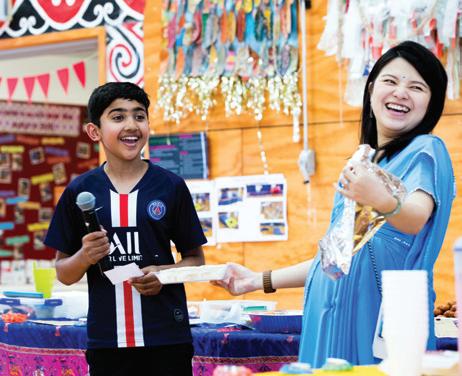
In the Far North, a collection of stories about Te Tai Tokerau tūpuna is showcasing inspirational role models to ākonga Māori. A stand-alone programme for Pacific learners is strengthening wellbeing support through the pou of identity and Pacific values. In Wellington, a school is empowering bilingual and plurilingual students to hold fast to their culture, identity and language while embracing life in Aotearoa.
You can also read about some incredible programmes across the motu; like the Mana Ake programme in the West Coast bringing mental health support to even the most remote of places; or a Coherent Pathways Guidance Tool helping kaiako better support rangatahi as they move through the different ages and stages of learning; or the once-in-a-lifetime experiences, learnings and opportunities of principals leading a community through a pandemic.
This is our second to last issue of 2022. It’s certainly been a whirlwind year, and I can’t wait to properly sign it off in our next edition.
Kia pai te rā Sarah Wilson, chief editor Rāwiri Hindle welcomes the opportunity to use the story of a Ngāti Kurī tūpuna for a mahi toi project in the far North.
Rāwiri Hindle welcomes the opportunity to use the story of a Ngāti Kurī tūpuna for a mahi toi project in the far North.
A collection of stories about Te Tai Tokerau tūpuna is showcasing inspirational role models to accelerate ākonga Māori cultural pride, academic success and engagement at school and kura.
Backed by extensive research, A fire in the belly of Hineāmaru by Melinda Webber and Te Kapua O’Connor features stories of 24 inspirational tūpuna – their actions, values and aspirations.
The University of Auckland’s Professor Melinda Webber (Ngāti Whakaue, Ngāpuhi, Ngāti Kahu) is Te Tumu/ deputy dean of Faculty of Education and Social Work, and Ahorangi/professor in Te Puna Wānanga/School of Māori and Indigenous Education. Her research focuses on ākonga Māori and achievement.
“My research has shown that many mainstream classrooms don’t speak the language of Māori students,” says Melinda.
“They rarely include their ways of knowing in the curriculum and they almost never hold Māori ancestors up as role models of success or academic excellence. Yet, Māori know by way of whakapapa, our cultural narratives and our distinguished history of oratory that we descend from a long lineage of academic excellence.
“What they [ākonga Māori] want is a curriculum that inspires them and shows them how they can contribute back into their communities with the skills, strengths and interests that they have – they should know that they can bring their whole selves to their future endeavours.”

Melinda was awarded a Rutherford Discovery Fellowship in 2017 to tackle an important question facing educators: How can we foster cultural pride and academic aspiration among Māori students?
“If we want to educate in ways that accelerate Māori student cultural pride, academic success and engagement at school, we need programmes of learning, classroom resources and books that acknowledge and celebrate the lofty aspirations, histories and whakapapa of Māori students and the communities they carry on their shoulders with them to school every day,” she says.
Between 2017 and 2020, Melinda worked with doctoral student and co-author Te Kapua O’Connor (Ngāti Kurī), on The Starpath Project.
“It was during this study that we started to better understand the considerable desire that Māori students have for curriculum content that emphasises their whakapapa/ history. This finding influenced Melinda’s application for Marsden funding, leading to this project and this book,” says Te Kapua.
A fire in the belly of Hineāmaru, available in English and te reo Māori, brings together the two academics’ educational, community, personal and professional interests in Māori student success and whānau aspirations.
“Māori students must come to believe that their knowledge systems, language and culture have as much value in modern times as they did in the past. Role models and positive counter narratives are essential here,” says Melinda.
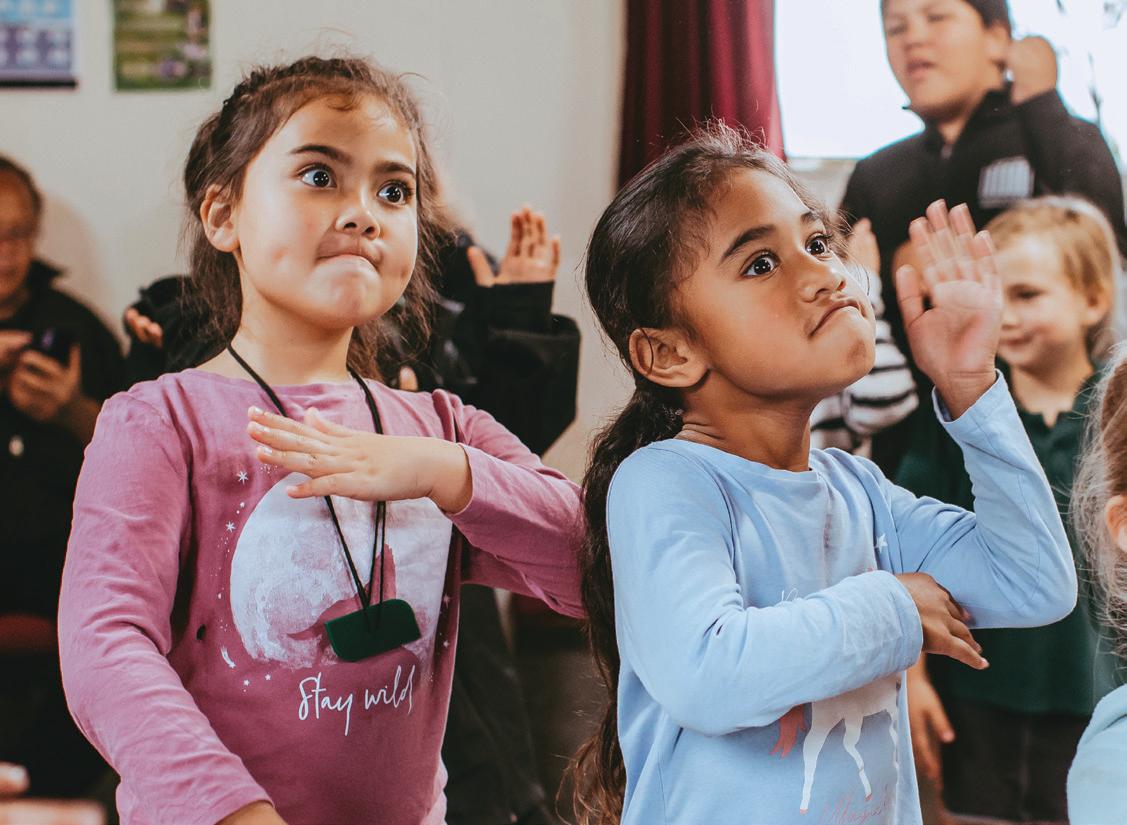
“The discourses within Māori communities themselves don’t focus on academic underachievement and deficit. Instead, the focus is on the strengths, wisdom and opportunities tamariki Māori need to flourish. Māori families have told me that they want their children to learn in educational contexts that teach them that their ancestors were exceptional, tenacious, courageous and clever,” she says.
A positive sense of Māori identity is related to school success and achievement because it helps ākonga Māori remain academically persistent in the face of racism, negative stereotyping and low teacher expectations.
As there is little separation between past, present and future in Te Ao Māori, Melinda says that the tūpuna profiled in the book are powerful role models in contemporary times too.
Melinda’s research has found that the career paths tamariki and rangatahi aspire to are often highly influenced by the role models in their lives – whether they’re alive or from the past.
“We can’t be what we can’t see, so hearing about all these tūpuna shows them that Māori didn’t sit back and let things happen to them. They were active and agentic – they sought education and engagement with non-Māori.
“All of these bits of information, I hope, will help Māori to sit with their backs straighter and encourage non-Māori to think ‘oh, that’s a different history from the one I’ve heard, or read’.
“I grew up in an education system that didn’t look like me – I was taught amazing things about James Cook, Kate Shepherd, but I was never taught about my own ancestors. I wasn’t taught that I descended from greatness, however when
Use the promo code GAZETTE for a 20% discount via the AUP website aucklanduniversitypress.co.nz or email press@auckland.ac.nz.
we go onto marae and other Māori contexts, it is always about connection and feeling a sense of pride – it’s a real celebration of identity,” she says.
Melinda says that while schools from throughout Aotearoa could use the stories, ideally each school can come up with their own kōrero tied to their particular rohe/area.
“This is a resource for teachers in the first instance and it’s pitched at a level that secondary students can also read. It doesn’t preclude the stories being taken and simplified for a primary audience, alongside some pedagogical notes – I would love to see something like that happen.”
Melinda explains that curriculum can be woven into all the stories in the book. A story about Nukutawhiti, one of the navigators who brought the Ngātokimatawhaorua waka into the Hokianga Harbour, talks about the types of trees he used, the distances travelled, how he kept himself and his crew fed, and how he was guided by signs he saw in the sky, stars and the birds.
“I talked about this story to a group of teachers in Kaikohe and got them to brainstorm what they could teach from this story in each of the 13 curriculum areas. They came up with three or four things in each curriculum area.

“We tested one of the stories with primary and
intermediate age tamariki. We asked: ‘If you were designing a waka to come to Aotearoa, what kinds of materials might you use?’ They designed clothes they would need on the journey and when they got to New Zealand because the weather is completely different for different parts of the voyage,” says Melinda.
“What ākonga Māori want is a curriculum that inspires them and shows them how they can contribute back into their communities with the skills, strengths and interests that they have – they should know that they can bring their whole selves to their future endeavours.”
Melinda Webber
The book’s release was delayed by a year so that a te reo Māori version could be prepared by Quinton Hita (Ngāpuhi).
“It’s not a direct translation of the book – it’s written with a kind of Māori worldview. That was an explicit act of decolonisation because there are not many resources provided for Māori medium education. We wanted ākonga in Māori medium context to have these resources – we waited so they could be published together to ensure that the mana of both books and languages are honoured.”
Melinda explains that doing this is not only an act of decolonisation, but also acts to indigenise New Zealand history.
“We’re not trying to negate anyone else’s history but we’re trying to say these are the stories we tell when we have an opportunity to narrate our own history. It’s saying ‘here’s a starting point – it’s exploring Māori histories but is also a springboard for all histories. We need to know each other’s stories so we can be more empathetic to become a more accepting and progressive society.
“The whole project is about belonging, connection and contribution. Māori have had a longer time in this place and have a particular relationship with the land, but that doesn’t preclude other people – even the newest migrants have stories about their family’s desire to come here,” concludes Melinda.
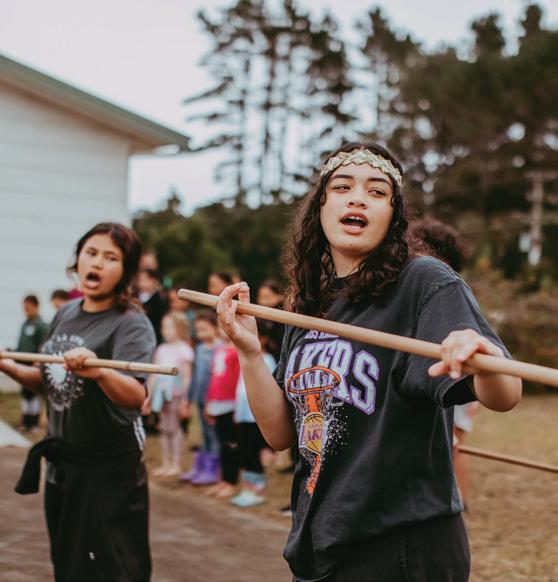
The Heart of the Matter explores the bicultural arts education movement in the 1950s/1960s (The Tovey Experiment). When Alan and Bebe Simpson were exploring music education at Ngātaki School, Elwyn Richardson was doing his In the Early Years work down the road at Oruaiti School.
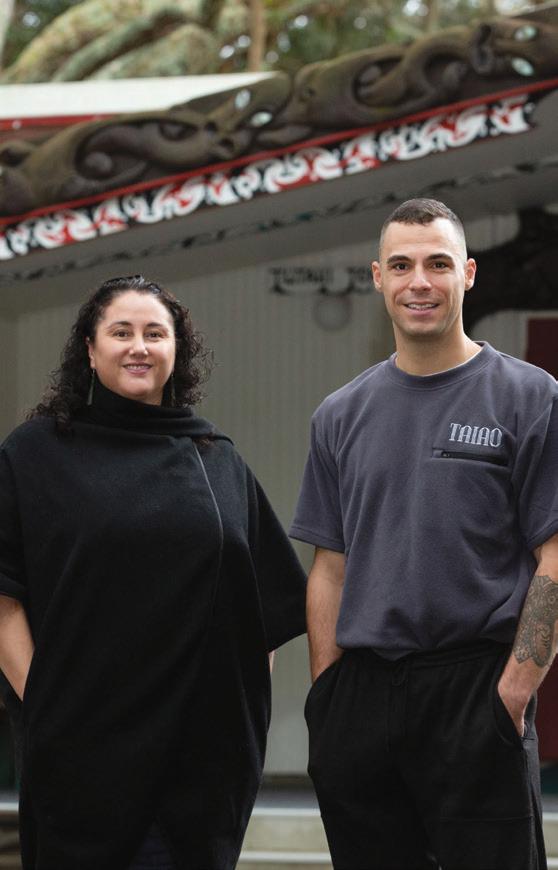
“Part of our project has been going to the landscapes and learning the history contained within the waiata so that our tamariki are very strong and confident in their identity. When they sing those waiata, it’s more than just singing the words – it’s knowing the history behind them.”
Bethany Edmunds-KukiThe mahi toi ignites a sense of cultural pride. Dr Melinda Webber and Te Kapua O'Connor.

In the Far North, Te Hāpua School and Ngātaki School have been involved in two Creatives in Schools projects that have woven together whakapapa and mahi toi/arts to tell the story of Tūmatahina, a tūpuna who led his people away from an invading tribe before he was killed.
A large part of the school, as well as Tracey Ashby, principal of the two schools; Rāwiri Hindle, Creatives in Schools facilitator; his son Te Kapua O’Connor, and Creatives in Schools facilitator, Bethany Edmunds-Kuki are Ngāti Kurī and direct descendants of the innovative hero.
When Te Kapua told his father, Rāwiri about Tūmatahina, he saw the potential to use it as the basis for a mahi toi project using tūpuna stories, place-based learning, hauora and culturally responsive practice.
Wananga were held to develop the mahi toi project which combines mau rākau, waiata, dance and drama and culminated in a week-long kaupapa at Waiora Marae at Ngātaki in early November.
Primary school arts education specialist Priya Gain worked alongside Rāwiri across all three wānanga and with Selena Bercic (Te Rarawa) and Wiremu Sarich (Ngāpuhi, Te Rarawa), who came on board as local muriwhenua lead educators to support the mahi, particularly with taonga puoro, taonga tākaro, waiata, and kapa haka. Funding was also received from MENZA (Music Education NZ Aotearoa) to support the taonga puoro and taonga tākaro elements.
“As ngā toi Māori lead educators working in a wide range of schools in the Far North region, this is a key aspect to the sustainability of this project,” she says.
Walking in footsteps Rāwiri is a kaiako and ngā toi facilitator and began working with the two small rural schools in term 1. A dramaturgy process with teachers saw them drawing and sharing pictures to shift the story from literal to abstract and metaphoric, thus opening different ways to tell the story.
The mahi toi brings the whole story alive and ignites a sense of cultural pride in ways that elevate tamariki.
“We’ve been using a combination of all those arts in collaboration. After we did that with the teachers, we shared the story with the children and they said things like ‘is he real?’, and ‘where did he live?’ So, they got very interested straight away.
“When they found out Tūmatahina took Ngāti Kurī to Murimotu, an island off North Cape, we asked tamariki if they had been there. None of them had, so we brought it up in Google maps. They got so excited when they could
see the rocks in the water leading from the mainland to Murimotu. Their interest and sense of connection to this ancestor has been expanded on,” says Rāwiri.
“We have them walking on rocks and walking in the footprints of Tūmatahina – they’re actually walking in the footsteps of their ancestor, which brings in the taha wairua – it engages all their senses and their state of being, expressing the metaphor and symbolism rather than just the narrative,” he says.
Tracey says tamariki have been very engaged in a different way to the usual classroom learning. For many reasons, they couldn’t extend learning into science and geography curriculum areas by visiting the scene of Ngāti Kūri’s escape, but the story has been integrated into literacy learning.
“It became part of their reading and writing programme and they were researching and learning about the story at the same time as learning it through performing,” she says. “It’s a holistic literacy as well – a literacy of movement, waiata, knowing tikanga and te reo,” adds Rāwiri.
Bethany Edmunds-Kuki believes that tūpuna had a hand in Covid delaying a waiata project she and husband, Anaru Cook, were commissioned to do as part of Creatives in Schools in term 1. The couple moved from Tāmaki Makarau Auckland back to Bethany’s roots in Kaitaia and wanted to share their skills in hip hop, music, audio engineering and using creative modes of engagement with rangatahi.
“A few years ago, the two schools Ngātaki Kura and Te Hapua put together a booklet of the waiata that are commonly sung at Waiora Marae. Rāwiri and I had not met at that point – we share a great-grandfather – but all the strands have woven together beautifully.
“Part of our project has been going to the landscapes and learning the history contained within the waiata so that our tamariki are very strong and confident in their identity. When they sing those waiata, it’s more than just singing the words – it’s knowing the history behind them,” she explains.
Bethany and Anaru have set up a temporary recording studio in the wharenui and recorded tamariki singing the waiata as a resource for the wider whānau. The waiata are threaded through the mahi toi performance, with the kōrero helping to illustrate the story.
“We’ve seen an increase in their confidence using te reo Māori and their kotahitanga as a rōpu [unity as a team]. The project is making it easier for them to access te reo, history and tikanga without even realising it. Now they are vessels for all that mātauranga that they may not even realise until later in life,” concludes Bethany.
Students involved in the mahi toi share their feedback about the experience.
» I really enjoyed working with Matua Rāwiri learning about the different beats and styles to tell the story of Tūmatahina. I enjoyed how he retold the story so we could see what Tūmatahina was thinking, like how he created the distraction to confuse the others. There were lots of different styles used, like instruments and waiata.
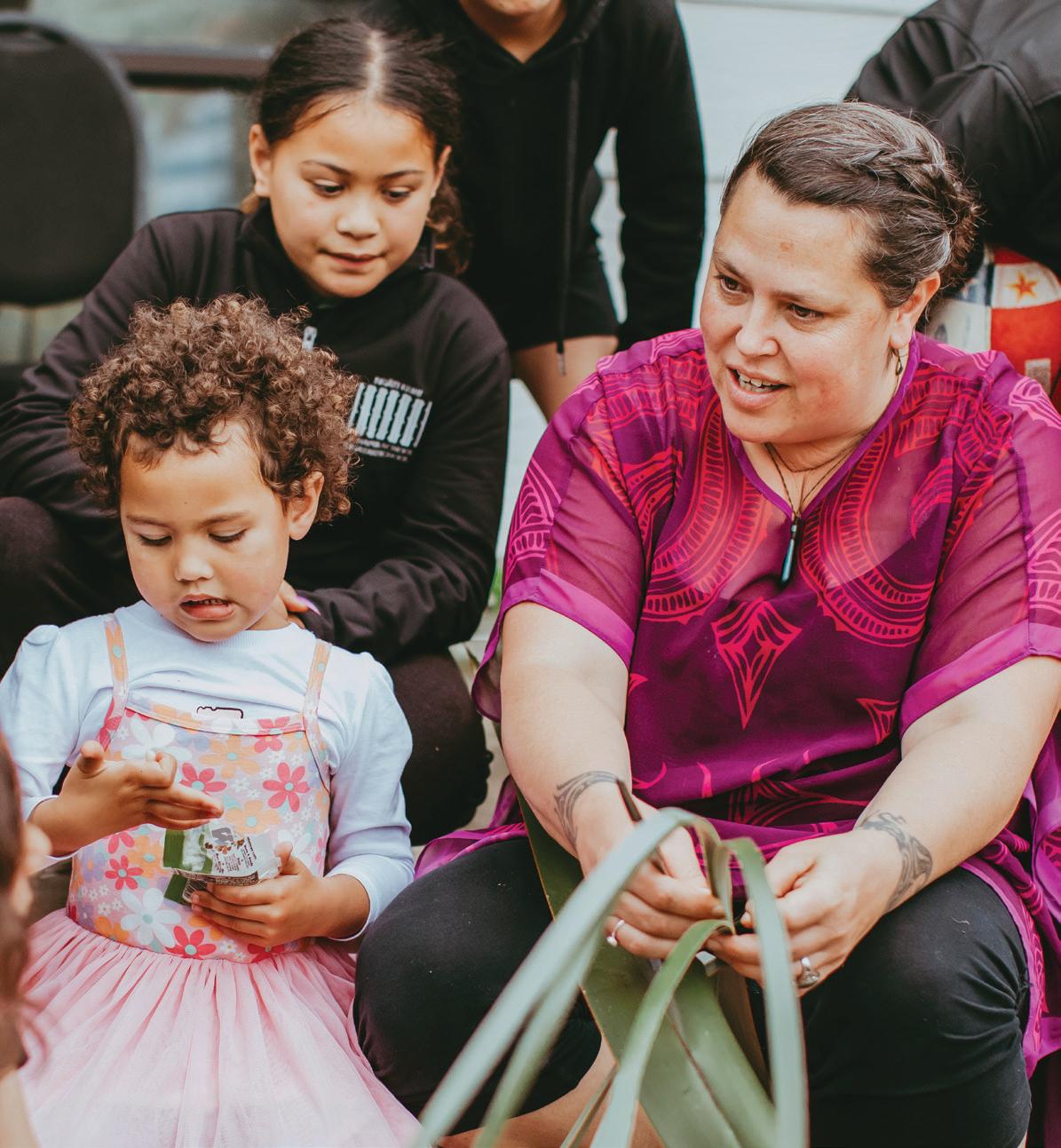
» It felt like we were Tūmatahina. We had to jump on the stones quietly and over the waves. It made me feel good in my head. I like learning that way.
» The performance worked out great for me. It was seeing people happy, my family watching. They were proud. Mum, Papa, Nana and Dad had tears in their eyes.
» We sang the songs to the parents. They were learning new songs about their ancestors and whakapapa as they listened.
» The Tūmatahina story is a very old story. We wouldn’t all be here if it wasn’t for his sacrifice. So, it is extremely important for everyone to know that Tūmatahina is not just a giant, but a hero. I loved every part of this experience.
» Whaea Beth is a great singer. We learnt new songs and made cool raps about our ancestors and whakapapa.
» I learnt that our ancestors’ bones are in a cave on our mountain.
» The acoustics in the wharekai were just perfect for haka and waiata to echo and bounce
the entire marae.
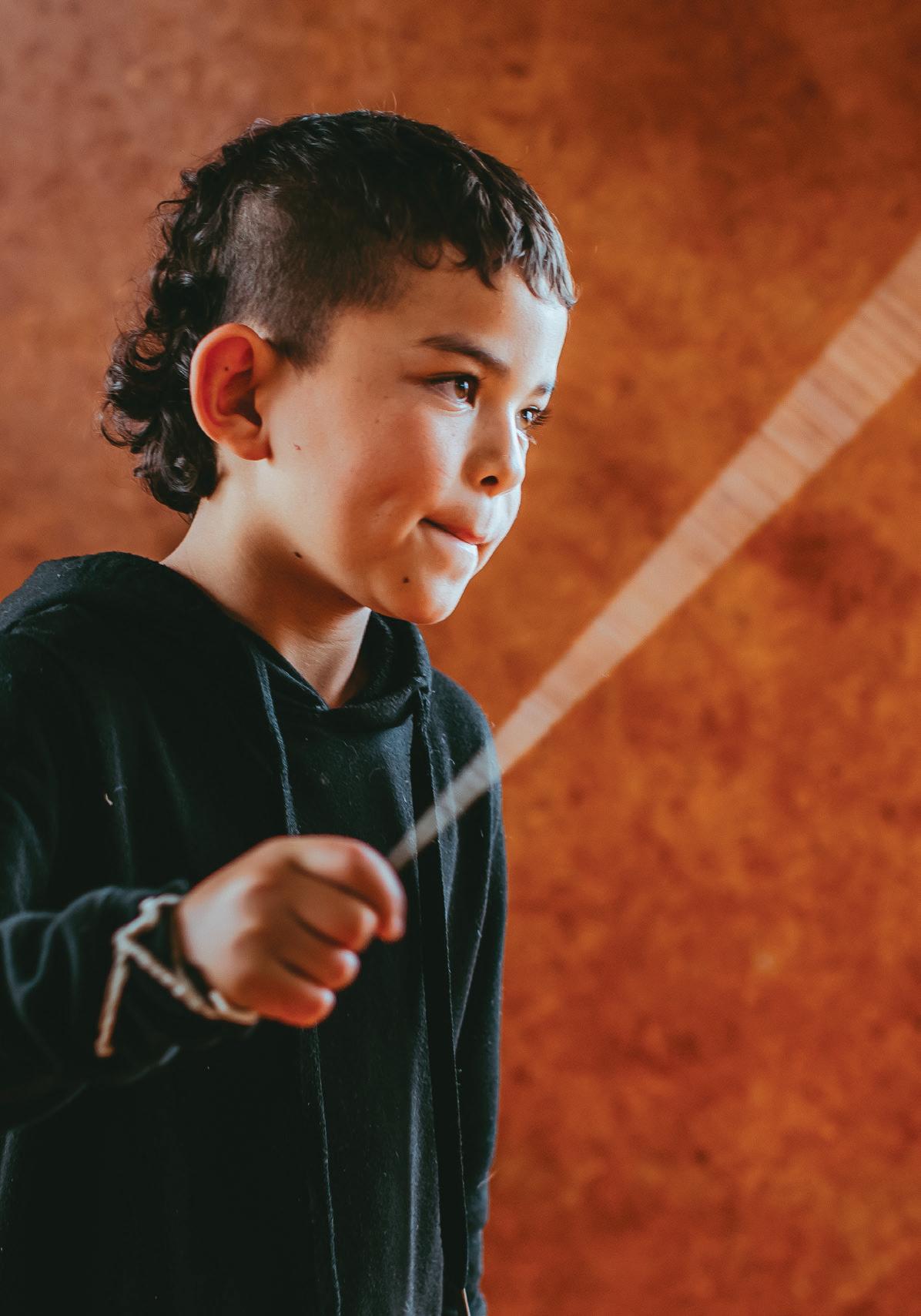
“The discourses within Māori communities themselves don’t focus on academic underachievement and deficit. Instead, the focus is on the strengths, wisdom and opportunities tamariki Māori need to flourish."Dr Melinda Webber
The launch of Tai Poutini Mana Ake on the South Island’s West Coast is bringing students and communities closer to mental health support and services in even the most remote parts of the region.
The school-based Mana Ake wellbeing programme has been expanded to deliver early interventions for mild to moderate mental health needs among more than 3,000 students in Years 1–8 on the West Coast.
First launched in Canterbury in 2018, Mana Ake was part of the Government’s plan to support children living in earthquake-affected communities in Canterbury and Kaikōura.
Mana Ake is a cross-agency initiative between Te Whatu Ora – Health New Zealand and the Ministry of Education. The West Coast programme has been co-designed locally with iwi, schools and local social and health services.
Peter King, principal of Maruia School, and Mandy Dodds, principal of Kumara School, are part of a steering group which aims to strengthen networks on the Coast.
“The tyranny of distance away from support is the biggest challenge,” says Peter, whose school in the Maruia Valley has a roll of around 20 students.
“In my almost 12 years here, there have been various times when it’s difficult to find support quickly for whānau or individuals within a whānau. What I’m really hoping, through setting up this process on the West Coast, is that it’s going to make that a lot easier in terms of knowing who to contact and having a variety of resources available to us.
“Part of that challenge is not only our remoteness, but also the challenge of not having enough specialist support services,” he says.
Mandy agrees, saying that it’s difficult trying to find resources for tamariki when they most need it.
“Often, it’s a time of crisis when you need those resources in a hurry and a lot of the time, they’re not there.”
Schoolwide programmes like Pause, Breathe, Smile or Rock and Water can help small schools to support students sustainably.
“I think with all students, if they can learn simple ways to cope when things do get a bit tough, they’ve got those tools that they can use. Then it stops it escalating, or hopefully slows some of that down,” says Mandy.
Mana Ake Tai Poutini will be delivered by Poutini Waiora, a West Coast-based Ngāi Tahu social services provider. Mandy and Peter say that project lead Sarah Birchfield and her strong team have put in a lot of mahi
consulting with students and whānau, iwi and kaumatua, schools and the wider community.
“Sarah, who is employed by Poutini Waiora to do the Mana Ake work, is now attending our kāhui ako meetings and having some input into that wellbeing space,” says Mandy.
“In the Buller area, Sarah attends all our Buller Principal Association meetings,” adds Peter.
One of Mana Ake’s key strengths is that it has been codesigned by the local community, which means it can be tailored to offer meaningful support at a grassroots level. Consultation throughout the West Coast confirmed the reality that a lack of resources and the geographical challenge of meeting needs in a timely fashion are key issues.
“For someone to come to our school from Westport is a four hour round trip and that eats into our resource time as well. One of our challenges in setting up Mana Ake is to see if we can establish some sort of working model that may be able to be copied into other areas of providing resources and support to schools and communities across the West Coast,” says Peter.
The three-tiered model starts at Tier 1: a whole school focus; Tier 2: a smaller group focus within a school, and Tier 3: a more individual personalised focus.
“We’re looking at three ways of rolling that out. With Poutini Waiora being a partner to delivering the programme, they are looking for strategic partners. For example, in the Buller area and in Greymouth, Homebuilders West Coast Trust [a social services provider] have the contract for providing social workers in schools in the Buller community as far south as Greymouth.
“They are already well established and so that’s an example of a partnership with Mana Ake with key resources that are already in the community and working effectively, with relationships already established,” explains Peter.
The model will be put into a trial phase with a small group of first-priority schools. That group will be expanded, and any fine tuning will be done as part of the rollout to each group.
“Often, it’s a time of crisis when you need those resources in a hurry and a lot of the time, they’re not there.”
Mandy Dodds
Like Maruia School, Kumara School on the Otira Highway is remote and surrounded by dairy farms. This means that both schools have quite high roll turnover, with some families being sharemilkers and moving to new farms each year on 1 June, or others being farm workers.
While Mandy says she’s lucky with the tamariki at her school, both principals say most mental health needs come from children who move around a lot.

“When you’re getting children who have shifted two, three schools in a year and often over quite big distances if parents are shifting around quite a bit, that creates all sorts of anxieties. We do a lot of work with our school culture to support those children when they’re with us. So, part of it is having that strong culture of care and kindness,” says Peter.
“Much the same for us – we have a really strong culture of looking after each other that seems to work,” adds Mandy.
Kumara School is part of the Māwhera Kāhui Ako and Mandy says the group has been working to develop a common language about learning and restoration and hopes to do the same around wellbeing.
“What we’re hoping is that if you go to a place that is using a similar kind of language, it lowers the anxiety a little bit,” she says.
Both principals have come up with strategies to meet the mental health needs of their students with Mandy saying their learning support coordinator fills the role and Peter
saying his school tries to use their RTLB service.
“We’re fortunate that we’ve had a really good RTLB connection over the last few years and that has been an amazing support for us, particularly when we have had those crunch moments with children or whānau – just in helping to point us in the direction of who we can get support from – and then throwing their weight behind that,” says Peter.
Mandy and Peter argue that the myth that West Coasters just ‘get on with it’ doesn’t always serve children and whānau well.
“They do get on with it, but in other ways maybe some of this just stays hidden, and that’s where that whole building resilience becomes really important, because if the kids are building resilience and taking those skills home, parents and caregivers can in turn build a bit of resilience,” says Mandy.
“I would agree with Mandy that that tends to mean that some people don’t speak up. They don’t get the support they need. I know we have some good networks in our own community of people who look out for each other,” says Peter.
“I’ll do that with adult members of whānau that I’m aware of – I make that part of my role. ‘How’re you going?’ ‘When was the last time you took a break from the farm?’ Those sorts of things. But you’ve got to have those relationships and sometimes you just miss those people – especially if you’ve got families coming and going,” he adds.
Pause, Breathe, Smile is a mind health programme designed to equip children aged five to 12 with tools to manage the ups and downs of life and set them up for a healthy future. Visit pausebreathesmile.co.nz.
Rock and Water is an evidence-based, scientifically proven programme used to develop social skills. Visit rockandwater.co.nz.
• STEMSTARS brings STEM to life through the power of storytelling and fun activities.
• Eight exciting ‘STEM Labs’ with activities suited up to Year 6.

• Everything teachers need to deliver STEM lessons with confidence. Find out more at schoolgen.co.nz/stemstars
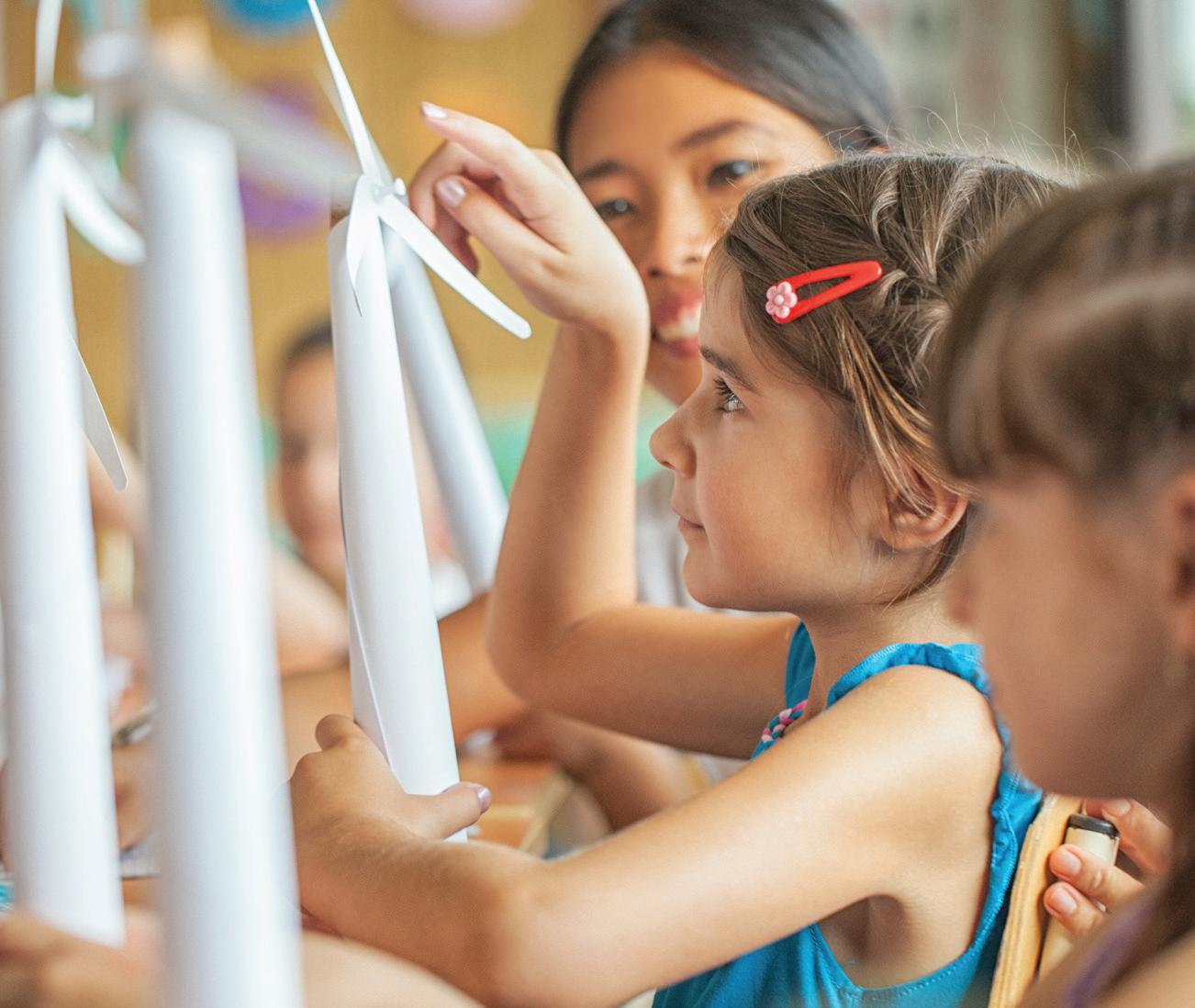
Tu’u Mālohi is a stand-alone programme developed and piloted to strengthen wellbeing support for Pacific learners in Years 9–13, their parents, families, communities, and schools.
 Students engage and learn through Talanoa.
Students engage and learn through Talanoa.
Tu’u Mālohi is built on the learnings from the PowerUp to Talanoa Ako longitudinal evaluations from 2016 to 2019 and a pilot programme, ‘O A’u Lea’ from 2019/2020.
It was co-designed by a Talanoa group of Pacific experts from the health, justice, youth work, faith, community, social services and education fields.
“Pacific Champions from these various sectors like Professor Tagaloatele Peggy Fairbairn-Dunlop, Dr Lesieli Tongati’o, Dr Fuimaono Pulotu-Endemann, Dr Melani Anae, Lealamanu’a Caroline Mareko, Saimoni Lealea, Dr Cherie Chu-Fuluifaga, Dr Aiono Manu Fa’aea, Rob Luisi and Fati Tagoa’i to name a few, converged and spent some time looking at what the Ministry had initially pulled together from the pilot programme participant feedback and evaluations,” says Daisy Lavea-Timo, director of Cross-Polynate.
“We were then unleashed to design, deconstruct and re-construct the programme through a facilitated Talanoa.”
The programme was refined and renamed Tu’u Mālohi (stand strong) and tendered through GETS for Auckland, Wellington and Christchurch and emerging Pacific population locations. For 2022, the following 10 areas were selected: Auckland (four), Palmerston North (one), Wellington (two), Blenheim (one) and Christchurch (two).
The Tu’u Mālohi programme follows an ‘As and By Pacific’ delivery approach that seeks to strengthen Pacific wellbeing through four key pou:
» Pou 1: Identity – migration narratives, where we come from, Pacific in the diaspora
» Pou 2: Racism – identifying awareness and strategies to combat
» Pou 3: Pacific values as a source of resilience – who we are
» Pou 4: Careers pathway and goal setting – the ability to dream.
Cross-Polynate ran both the Christchurch Tu’u Mālohi programmes, one at Christchurch Girls’ High School (CGHS) in combination with Christchurch Boys’ High School and the other at Avonside Girls’ High School (AGHS).
The project team consisted of in-school leads Maria Lemalie (CGHS) and Lesieli Peseta (AGHS), PLD lead Angie
Malae (University of Canterbury), social worker Jeremy Faumuinā and support teachers Edward Finch, Angelene Sisifa and Seta Timo. Pivotal to implementation was the partnership endorsement and support of principals Christine O’Neill (CGHS) and Catherine Law (AGHS).
Daisy says the programme provides many benefits, particularly through partnership between learners, parents, and the schools.
“There are 11 sessions in the programme – for some we’re working only with rangatahi, and then in some, parents had to be there, and in other sessions we provide professional learning development with staff as informed by the voices of the parents and the students. So, there’s that wonderful weaving.”
Students enjoyed learning about migration narratives through Talanoa, and created and shared their own stories through visual and performing arts.
Reflection videos from the students show they appreciated the strengths-based learning about their Indigenous Pacific knowledge, values and cultural frameworks which affirmed their identities and way of being.
Daisy says the pou around ‘Identity’ and ‘Pacific values as a source of resilience’ are enhanced by the partnership method of the programme. Learners are at first engaged to discover their identity, then parents are brought along the journey.
“In the professional learning development part, there are two sessions where the parents’ voices and the children’s voices are shared with staff around their experiences in school. So that learning and sharing makes it a really unique programme.”
The programme is intended to complement existing work within schools on an ongoing basis rather than being a temporary ‘add on’.
This is partly achieved through the sessions with staff, who have found the opportunity to hear student and parent voices to be enlightening.
“I think it was quite eye opening for them and it was great for them to have a safe space to unpack our Pacific students’ responses to the question, ‘Do we see ourselves reflected in the curriculum, classroom and around the school?’”
Daisy Lavea-Timo“We’re working with rangatahi, but then in some sessions the parents had to be there and in other sessions we provide professional learning development with the staff that is informed by the voices of the parents and the students. So, there’s that wonderful weaving.”
The PLD sessions brought the voices of Pacific students and parents to the fore of those teaching and learning conversations.
Teachers were able to hear some real-time lived experiences of the participants and were invited and supported to engage in a critical reflection of their practice and design of their learning spaces and curriculum material.
Combating racism is a core element of the Action Plan for Pacific Education 2020-2030.
Discussions surrounding racism can be tough but necessary conversations, according to Daisy. She says that the approach used in the programme helps to develop these conversations.
“We talk about naming, navigating and negotiating. Those are key terms that were put in this programme. So, it was wonderful to be able to hold space with our Pacific learners to maybe name what they might have felt, then ask, ‘How do we negotiate that? How do we navigate that going forward?’”
Daisy gives an example of how this can look in practice.
“In one of our sessions, we had scenarios printed out around defining some terms like ‘microaggressions’, ‘gaslighting’ and ‘non-homogeneity’. The teachers explained the term and we used lived experience stories from research to illustrate them. Some students courageously shared some of their own personal experiences. We then facilitated a Talanoa around, ‘How could we navigate that if it happens to us?’
“So just simple things they can have in their toolkit, such as if someone has a dig at you, you can say something like, ‘Hold on, what do you mean by that?’ You can put the onus back on the other person to explain themselves. Keeping communication lines open and frequent with teachers is important too.
“Our programme was also fortunate to host the
The programme incorporates ideals but also provides practical tools for the students. The Cross-Polynate team were able to showcase Pacific excellence within the staff, parents, community and beyond through workshops and talks with Pacific professionals and renowned Pacific creatives.
The goal setting session with ākonga and their parents encouraged the students to ‘dream big’ and invited parents and teachers as partners, to examine the support systems and networks needed to enable the Pacific ākonga to succeed.
“We can all have some goals, but if we don’t have those systems to actually support us and sustain it, they’re just a lofty goal.”
Tu’u Mālohi has been instrumental in carving out a culturally safe and positive space to learn, to have courageous conversations, to dream big, and perhaps even more pertinent from these student voices, is the ability for Pacific learners and their families to remember and be affirmed in their Pacific identities and brilliance.

“This is important, all of this revelation – especially for guys, identity and going through depression, it stems to how firm your identity is and how much you know yourself,” says one student.
“Understanding our identity, we realised our appearances are beautiful, we have nice demeanours, we are funny, and that all comes from religion, our upbringings, our desire to love and to serve, going through all these Tu’u Malohi sessions, made me appreciate, just how cool our Pacific people are,” says another.
There will be more information about the next round of the Tu’u Mālohi programme after the pilot.
Top: Students Talanoa about their Pacific Identity and Values.
Bottom: The sessions guide students through practical tools and skills to increase self worth.
Left:
The Foundation has been delivering positive outcomes in youth development and engagement for over 26 years.

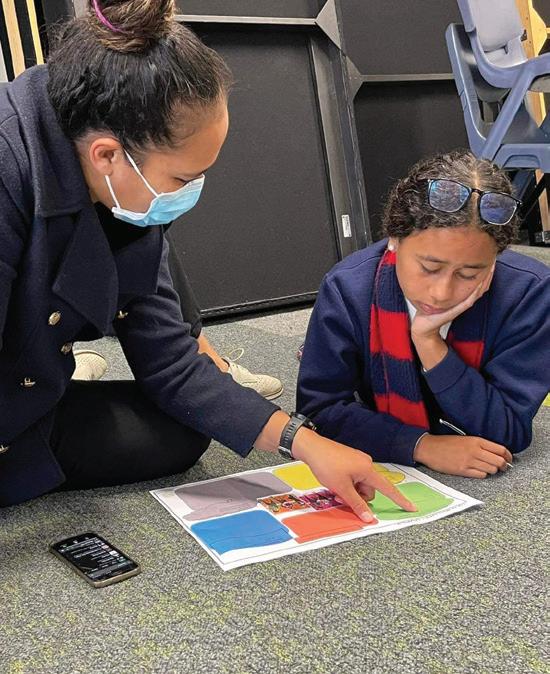

It’s amazing what tamariki and rangatahi can accomplish, often beyond their own expectations. And that’s why our programmes, working in partnership with schools, make a di erence - especially post lockdown where youth disengagement and mental health conditions appear more prevalent.
Our programmes include Kiwi Can, Stars, Career Navigator, Project K and Kiwi Tahi and have been proven to have a direct impact on building resilience, self-confidence and self-e icacy. Participating students have access to inspirational leaders and mentors when taking part in programmes that provide the skills they need to prosper.


Kiwi Can is our primary school programme and is delivered to every child each week. To find out more about Kiwi Can, scan the QR Code.


Stars supports the critical transition into secondary school for Year 9 students using the tuakana teina approach alongside Year 12 & 13 Peer Mentors. To find out more about Stars, scan the QR Code.





Career Navigator assists young people to become work ready. To find out more about Career Navigator, scan the QR Code.
Project K is for students aged 14-15 with low self-e icacy. To find out more about Project K, scan the QR Code.
Our programmes are informed by best practice research thanks to our University research partners, showing markedly improved attitudes, behaviour, and academic results. We help tamariki and rangatahi boost selfconfidence and reduce truancy rates plus other at risk behaviours, helping participating students feel more positive about the future.
Please visit our website to see our latest research on youth disengagement.
For more information on our programmes contact our National Programmes Manager, Kerry Ann Norman: m. 021 960 075
e. kerryann.norman@dinglefoundation.org.nz

Continuity for learners is at the forefront of a Coherent Pathways Guidance Tool helping kaiako across Te Kāhui Ako o Pupuke and Aotearoa understand how to better support tamariki and rangatahi as they move through the different ages and stages of learning.
Professional learning and development for kaiako is currently underway across Te Kāhui Ako o Pupuke as they prepare to embed Coherent Pathways to Numeracy into the mathematics curriculum.
Throughout 2022, representatives from each school in Te Kāhui Ako o Pupuke, plus two early learning representatives, have been coming together to collaborate on improving teacher capability ahead of implementing Coherent Pathways to Numeracy across the kura community next year.
A maths roadmap for all schools in the cluster has been drafted and will be refined again before it’s embedded into the curriculum in early 2023, with the goal of arming learners with the mathematics knowledge they need to succeed in employment.
Te Kāhui Ako o Pupuke across-school lead Katrina Hosken says the Coherent Pathways to Numeracy team worked alongside ImpactEd facilitators during the development phase, with the understanding that mathematics is an essential element within a broad range of contexts.
Ākonga benefit significantly from the attitudes, skills and knowledge learned in problem-solving subjects, which can then be applied across a broad range of arenas.

Katrina says the collaboration has facilitated rich discussions and led to cohesion across all schools.
“This document will enable smooth transitions as students move through the kāhui ako on their learning journey,” she says.
Identifying learning that matters Kaiako are currently undergoing professional learning and development, a vital step that allows them to connect with ImpactEd’s passionate and knowledgeable maths facilitators, to clarify their vision statements before they begin the implementation.
Te Kāhui Ako o Pupuke across-school lead Paula Snowball says this approach will “improve teacher capability and identify the learning that matters.”
“The facilitator support has produced rich, robust conversation and enabled kaiako to deepen their understanding of the maths learning that goes on before the students arrive in their classroom,” she says.
This term, the team is ensuring the map aligns with the draft of the refreshed Mathematics and Statistics learning area while remaining responsive to the specific needs of tamariki.
The team is unpacking transition points so kaiako can understand what the important mathematical
knowledge and skills look like at each stage of the education journey and how they can collaborate to create coherent pathways.
Ultimately, the hope is for students to have the knowledge they need to successfully enter employment.
Active and engaged citizens
Coherent Pathway initiatives encourage New Zealand children to live and contribute as active and engaged citizens of the world.
At Westlake Girls’ High School (WGHS), the STEAM (Science, Technology, Engineering, Arts and Maths) approach is a valuable tool that can be activated alongside these coherent pathways.
“STEAM integrates the learning areas in real-world contexts and encourages transdisciplinary learning, hence the connection and strong link to the Coherent Pathways mahi in numeracy,” says Paula.
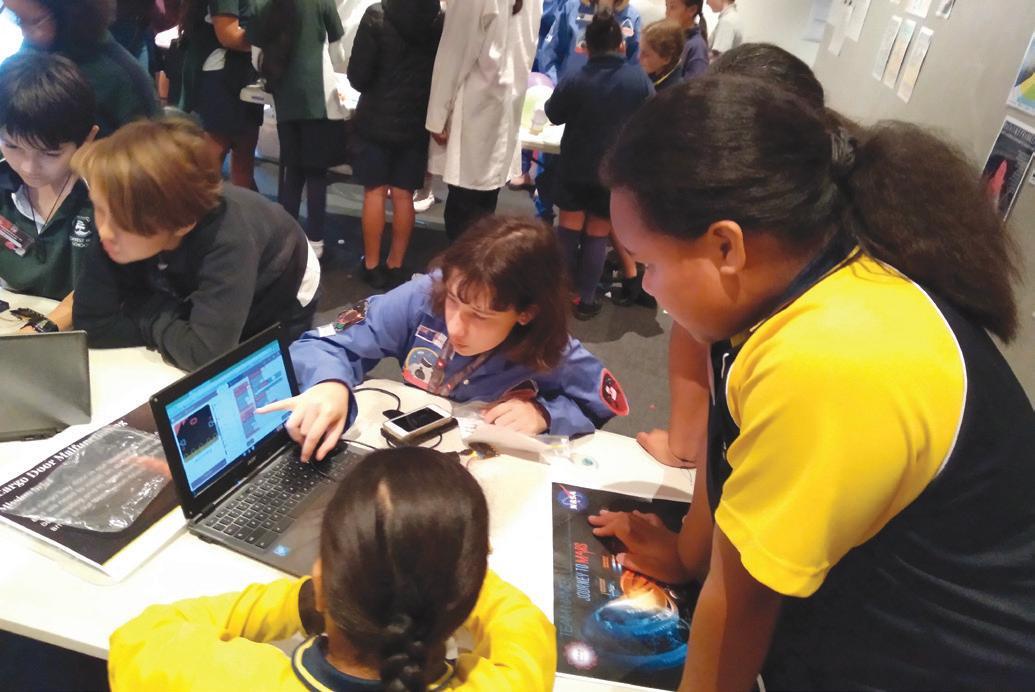
At WGHS, student leaders have supported all tamariki
Learn more about Coherent Pathways Guidance at curriculumtool.education.govt.nz.
“The facilitator support has produced rich, robust conversation and enabled kaiako to deepen their understanding of the maths learning that goes on before the students arrive in their classroom.”Paula Snowball
across Te Kāhui Ako o Pupuke to engage with STEAM subjects, which traditionally drew in primarily male students.
WGHS STEAM coordinator and across-school lead for Te Kāhui Ako o Pupuke, Susana Tomaz has been delighted with the response of the students as part of a recent STEAM Power-ED event.
Seventy tamariki from primary and intermediate schools in their kāhui ako came together with WGHS’s current STEAM students, STEAM alumni from Years 12 and 13, and Westlake Boys’ High School.
Engaging hands-on workshops wrapped around a storytelling approach with a strong Māori pūrākau presentation were designed to highlight pathways into these critical subject areas for every student, no matter their culture or gender.
Susana says this is where Te Kāhui Ako is so important; by joining with other schools in the area, a community with shared goals and initiatives can now work to enrich learning opportunities that will lead to a more dynamic set of options becoming available to school leavers.
Year 9 WGHS STEAM student Rosa says, “The goal of our STEAM programme is to teach students to solve problems in creative and innovative ways.”
This speaks to the spirit of the Coherent Pathways programme and the threads currently being woven into the education system as kāhui ako across the country work together to enhance learning for all ākonga.
Once the refreshed Mathematics and Statistics learning area is underway at WGHS, the review process will also be collaborative.
As well as gathering valuable data, the team hopes to hear from students about any gaps they feel need to be addressed.
Susana says it is an exciting time for Te Kāhui Ako o Pupuke as capabilities and confidence in the maths arena grows.
With STEAM and Coherent Pathways to Numeracy running together at Westlake Girls’ High School, she hopes students will become more engaged with maths as kaiako help them recognise the broader context of numeracy as an important discipline that feeds into their lives in numerous ways.
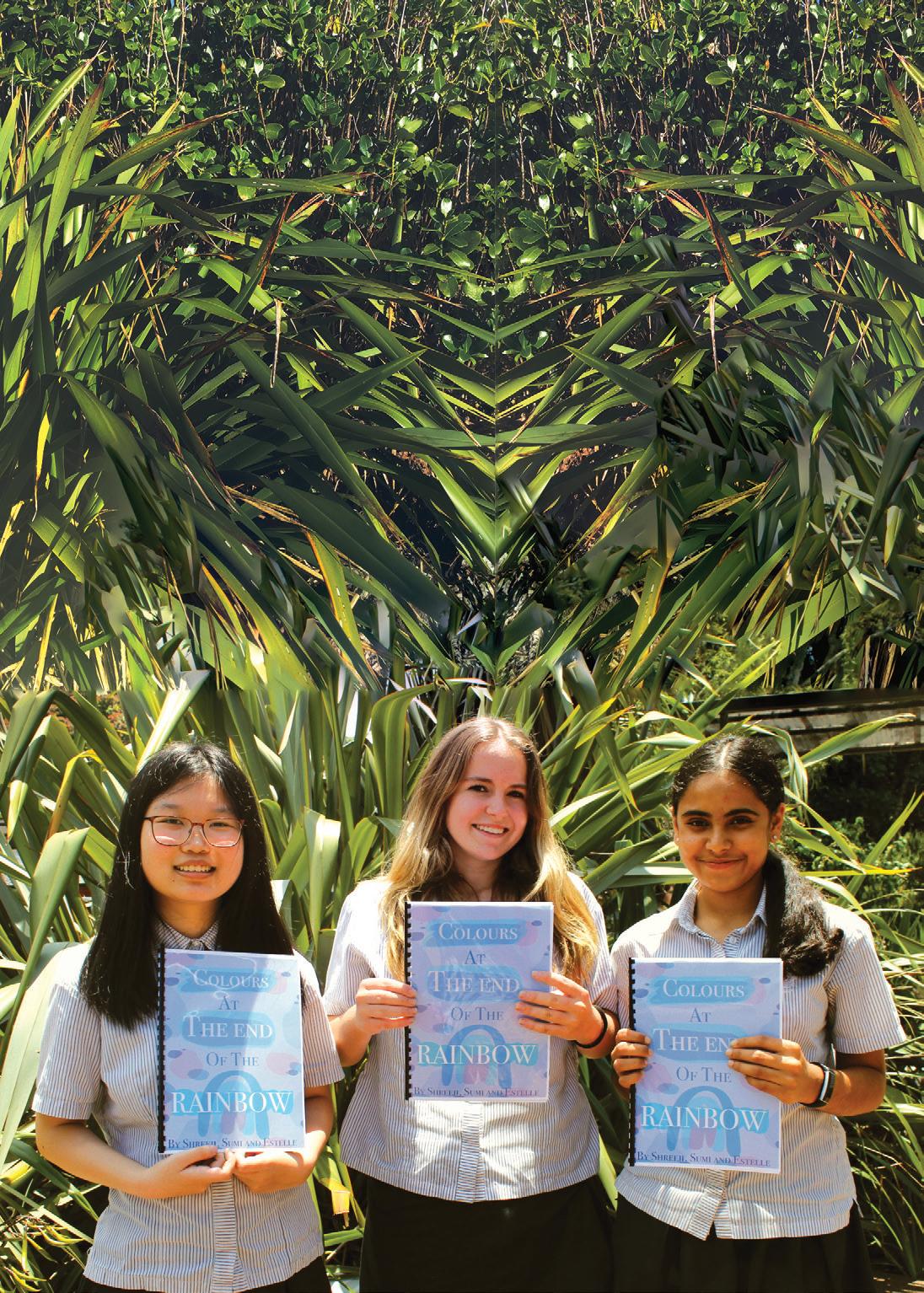
Have a blast and gain confidence teaching STEM with the Wonder Project in 2023.
‘A fun way to learn’ is the most commonly cited reason why teachers sign up to participate in the Wonder Project’s Rocket Challenge – a sentiment frequently echoed by participating tamariki, and the industry professionals who support the challenge in classrooms across Aotearoa.
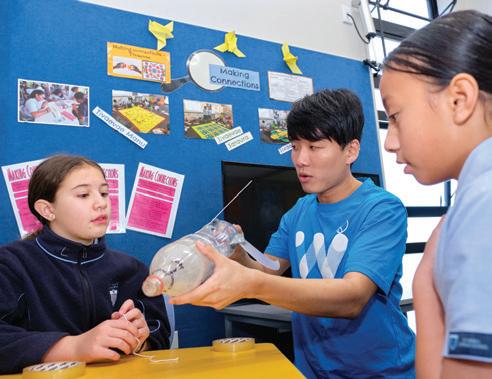
The Wonder Project is a free schools programme that seamlessly blends the thrill of fun, hands-on activities, like launching rockets, with STEM learning. By connecting classes with volunteer STEM industry professionals where possible, as well as supplying teaching resources, student resources, and a challenge kit for free, the Wonder Project aims to support schools to teach STEM with confidence.
Wonder Project challenges are designed to be accessible for kids from all backgrounds to encourage all ākonga to form a connection with STEM. To support this, everyone that signs up for the programme’s flagship Rocket Challenge in 2023 will have the option of using student activities in English, or te reo Māori.
What’s the Rocket Challenge?
• Term 1 and 2, 2023
Students blast off into STEM by designing, building and launching their own water rocket. While the rockets are flying, they’ll learn about Newton’s laws, the engineering design process, and working as a team.

The challenge is designed to be completed within the school term, taking around 12–16 hours across 6–8 weeks, or longer if you prefer.
All learning material is developed alongside teachers, industry professionals and students, and aligned to Level 3 of The New Zealand Curriculum, to take some of the pressure off planning for the school year.
1. St Heliers School students launch their water rocket, built using the Engineering Design Process.
2. A volunteer STEM industry professional supports students from St Annes School to design their rocket prototype.
3. The free kit supplied inspires wonder from lesson one and includes everything required to run the challenge.
Over 90% of teachers report their confidence in teaching STEM increases after participating in the Rocket Challenge.
Statistics from last year’s Rocket Challenge highlighted its impact across knowledge, perceptions and confidence in STEM from students and teachers alike:
• 95% of teachers said students were fairly/completely engaged with the programme.
• 80% of students reported that they felt more confident in STEM subjects after the challenge.
• 57% of students were more interested in STEM jobs after the challenge.
• 93% of teachers noticed a positive improvement in STEM perceptions among their students.
• 99% of teachers said they would do it again and nearly all would recommend the programme to colleagues. 1
All Wonder Project challenges provide scaffolded learning aligned to The New Zealand Curriculum, with the Rocket Challenge aligned to Level 3 of the curriculum.
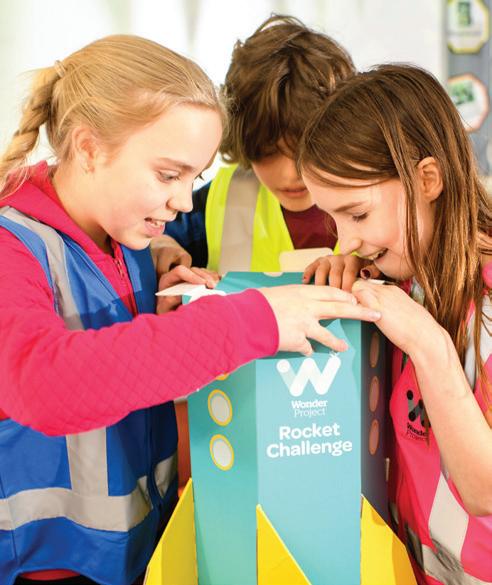
Rocket Challenge achievement objectives include:
• Science: Physical world: Physical inquiry and physics concepts. Identify and describe how movement and forces effect the motion of rockets.
• Technology: Technological knowledge: Technological modelling. Undertake functional modelling of rocket prototypes to inform decision making. Evaluate rocket prototype fitness of purpose to refine further developments.
• Mathematics and statistics: Geometry and measurement: Measurement and shape. Represent rockets through drawings and models. Use metric units to find length, volume, weight (mass) of the rockets and the angle of rocket launch.
Sign up now for 2023
The Wonder Project Rocket Challenge is now live for registrations. Sign up to be part of the wonder today at wonderproject.nz or contact wonder@engineeringnz.org for a kōrero with our facilitators.
Visit wonderproject.nz to find out more.

Ashgrove School embarked on a challenging project – a school production that featured all 460 students. It created a lasting impact and enhanced a feeling of community for everyone involved.

Students of all ages took part in the production.
Right: One of the performers singing a song from Cats
Broadway Bound is not your usual school production, but then again Ashgrove School principal Leon Van’t Veen is not your usual principal. Leon has over 20 years’ experience performing in theatre, including directing large productions such as Les Misérables and Jesus Christ Superstar and has used these skills to put on a production that involved all 460 students in the school.
The inspiration for the production was the disruption to the school community due to Covid. Leon felt that a project like this could help to regain a community spirit. He took on the role of writer and director and was assisted by Georgia Dunn, a teacher who became the assistant director and choreographer.

“We really wanted to showcase the arts because often with a multi-layered curriculum it can get overlooked. I think that through my experience in the performing arts and Georgia’s as well, we both really committed to raising the profile of the arts. It’s a huge part of our curriculum.”
Leon recognises that doing a production on this scale could be scary for a lot of schools, but he had the commitment of the community and staff to ease the process.
Leon Van’t Veen“The stage was built by our caretaker and one of our teachers. All the staff worked together, community members helped, parents helped.”
The efforts on the part of the school community paid off.
“We saw our school come to life post-Covid. It seemed for two years we’ve been asking parents to stay away because of lockdowns and that kind of thing. So, it was really nice to invite them back in and be connected again because the Ashgrove community is a really connected and supportive community.”
Leon and Georgia wanted the show to also reflect school values such as honouring te Tiriti o Waitangi and sustainability. One of the ways that this was achieved was through developing the script to include tikanga and te reo Māori. Georgia explains that some of the students had the role of flight attendants who provided safety briefings; after discussing how to include tikanga and te reo Māori the students wrote their ideas into the scripts.
“We really wanted to showcase the arts because often with a multi-layered curriculum it can get overlooked.”
The Ashgrove School production featured many numbers from Broadway, with the show’s narrative being that the performers were ‘competing’ for a chance to go to Broadway.
 Kayleigh, student
Kayleigh, student
The show also began with a karakia and the programme included a Māori whakatauākī. The programme was also linked to their sustainability goals – people had to preorder it so as to reduce unnecessary printing. The school also used recycled and reusable materials for props and costumes. The school’s enviroteam students provided ideas and skills to assist with achieving sustainability, including creating origami containers for food to help eliminate unsustainable packaging.
The show was developed using high standards.
“The set that was built, the staging and costuming wasn’t an average school production. Even the lighting company that we employed to help with our lighting design, said they had never seen anything like it before in a school show.
“It’s very high level but I think it’s important because kids know when they’re involved in something high level and that refines and focuses them and has them push themselves a little bit further.”
The students appreciated being treated in the same way as adult performers.
“With Covid, the only people you could talk to were the people in your class. Now I feel like I can personally connect with students of all ages around the school and people that I would not normally interact with.”
Student feedback from the experience highlights the benefits of the production.

» I was nervous to speak just in front of my class, and now I can speak confidently in front of hundreds of people.
» Next year, I know that speeches will be a higher standard because everyone will be much better at public speaking.
» Singing, dancing and acting are passions for some students. In a normal school day you wouldn’t get to showcase them, but at Ashgrove we could.

» It was a whole school show and if you weren’t sporty and if you weren’t bright, you had a chance to shine anyway.
» Before the show I couldn’t show who I really was on the inside. Now I can.
Above: Performing a song from Hairspray
Below: A song from Oliver
Images: Martha Grieve Photography.
“I wanted to treat them like young adults and have the bar really high from the beginning because then everyone rises to the challenge,” says Leon.
Leon could see the positive benefits that rehearsals and preparing for the show had on students.
“It did a lot for their self-belief and self-worth. You could see that they went to a rehearsal and got some positive feedback, then they were going to class feeling on top of the world and applying that feeling into their learning.”
The whole-school approach did mean teachers and staff took on additional roles. However, Leon says that by being honest and transparent right from the start, staff were enthusiastic and engaged rather than viewing it as ‘extra work’. Leon also looked at ways to make it easier if staff were working outside of usual school hours, such as providing food for staff and their families.
Leon would often do his principal duties before school to be able to work with the children on their performances. He also found that having a strong leadership team helped when extra support was needed.

The show provided an opportunity for staff to learn and to connect with each other.
“I had one of our teachers who has been here for 17 years speak to me on the final night. She said that in the 17 years of being at the school, she’d never seen our school so connected.”
Students were also able to broaden their social contacts.
“I guess one of the main things that came through was connectedness. The children felt really connected to the show and to each other because every child in the school was in the show.”
Two of the performers also found this to be one of the big benefits of being part of the production.
Jasper, who was one of the lead performers says, “At first I was a little bit annoyed to have Sunday rehearsals, but at the end it was fun talking to everyone from school that I wouldn’t normally talk to.”

Kayleigh, one of the dancers in the show, was delighted to share her passion for dancing but also loved the new interactions,
“With Covid, the only people you could talk to were the people in your class. Now I feel like I can personally connect with students of all ages around the school and people that I would not normally interact with.”
Leon and Georgia would like schools and kura to know they are welcome to contact them to talk about a production of this scale.
“Georgia and I would happily make ourselves available to support any schools and kura, as quite often this is a layer that is missed because people don’t quite feel that they have the capacity, but we’d happily support any school or kura through that.”
Leon can be contacted at leon@ashgrove.school.nz.
Get on board with Gold Star and join like-minded colleagues who are learning more about mental health, to help in your everyday life.
The Ministry of Education and EAP Services are behind Gold Star, a wellbeing programme designed specifically with early childhood, school and kura workers in mind.
This month, we focus on relationships. Friendships, partnerships, working and romantic relationships. They help bring connection, meaning and purpose to our lives, but sometimes they can be tricky.

Sign up for one of our webinars or eLearning modules to help better understand relationships, and how we can improve our relationships with the people in our lives. Find us at www.goldstar.nz
Sign up for Gold Star for free and discover the benefits:
• Help you feel less stressed at work
• Build resilience in times of change
• Guide your personal development or career direction
• Give you tools to handle conflict or tension in the workplace
• Offer resources to support you with lifestyle or health issues
Sign up for free Scan the QR Code to sign up and start your first module.

www.goldstar.nz





Emma, who speaks Mandarin, introducing the food she brought for afternoon tea during the final First Language Hui of the year.


Wanwan Liao would like to change the thinking around tamariki who possess more than one language.
The Eastern Hutt School teacher runs First Language Hui for such students and doesn’t like to think of them as English or ESOL learners. Rather, she prefers to think of them as emergent bilingual learners or bilingual students.
Labels can put too much emphasis on ‘English’, she says, and sometimes this comes at the expense of other languages.
“So, when teachers and staff change their thinking around ‘are you an English learner or are you bilingual?’ – you can see the difference in how we view the students.”
The message that comes through is that language is a gift, not a handicap.
The First Language Hui are held every Wednesday at the Lower Hutt school. Tamariki who possess a language other than English meet and get to practice with others who share that language – and there are a lot of students who do.
Of Eastern Hutt’s roll of slightly more than 600, a quarter of the students have a language other than English. They can be bilingual or plurilingual.

The programme is popular and with just Wanwan and teacher aide Vandana Patel, there isn’t enough room for everybody, so, it is a bit selective. Usually, a degree of fluency is required and sometimes a ‘language rotation’ will take place.
This year there are five different language groups for the hui – Spanish, Mandarin, Gujarati, Hindi and Telugu, the latter three reflecting the high proportion of students with Indian heritage at the school.
Wanwan aims for a strength-based approach. Rather than another language being seen as a hindrance, she sees it as a taonga that has been passed on.

All teachers should know that that’s a skill the students have rather than something in the background, she says.
“That’s the reason I try to remove the label. A bilingual brain helps you to learn languages in a more efficient way. It also enhances their metacognitive skills (thinking about their thinking). As a result, they may be taking some time to process information, it doesn’t mean they don’t understand.”
At Eastern Hutt School in Wellington, a language initiative is supporting bilingual students to uphold their language as a strength of identity in navigating life and education in Aotearoa.
Top


Bottom left: Children eagerly awaiting kai.

Right:

Wanwan says the students need to be taught that their language ability is a strength. So, there is some training and scaffolding needed, especially as first languages are not usually used in New Zealand schools.
This is done through hands-on activities and team building and problem-solving activities, encouraging students to use their oral language to complete tasks.
The students are grouped only by language. So that means children of different ages come together and learn from each other.
A simple example could be a game transporting cups with rubber bands and strings, in which they have to communicate with each other.

“We encourage them to use their first language in this game. We discuss words we might use in the game before we play, for example ‘rubber band’ or ‘left’, ‘right’, ‘slow down’, ‘up’ etc. Most of the time they know the words and can use them straight away,” explains Wanwan.
The weekly meetings run for about an hour. After a briefing about the day’s activities with the Year 5 and 6 leaders of the groups, they break into their language groups.
Wanwan says she discusses the activities of the day with the older children first so they can relay that to the younger ones, and often the younger students are more fluent in their languages, so, the students have skills to offer each other.

Quite often parents are bilingual and, especially in the past, often encouraged English use at home as they tried to adjust their children to New Zealand life.
But given the heavy emphasis on English at school, the older children also find it easier to communicate in English with their parents. Even if they are asked something in Hindi, for example, they will respond in English, Wanwan says.
English is the language of everyday life, so it can be more natural to use English rather than their first language. But Wanwan says she wants them to know that it is hard, so they will put more effort into it.
Older children often use less of their native tongue as they operate more in English. But it’s like muscle memory, Wanwan says. You need to use it to get it back.
“One of the kids said to me in his feedback: ‘I thought I’d lost my Hindi, but I’ve found it’.”
It is the first year of the programme at Eastern Hutt School, but Wanwan has previously introduced the First Language Hui idea at Newtown School. And before that she was at Te Aro School, where the first language programme was started by ESOL teacher Cathie Cahill, who Wanwan cites as a “huge inspiration”.
The programme is in its eighth year at Te Aro School and Cathie says you can see the difference it has made to the students who take part.
She says the programme aims to encourage pride in a cultural and linguistic background, and provide the students with opportunities they might not have had.
During that time, Cathie has noticed a growing pride and cultural connection within the linguistic groups. Students have become more confident about sharing their cultural knowledge and experiences, she says.
Some students have gone on to teach their classmates some words in their home language and they have created multilingual signs and displays to help make the diversity more visual around the school.
“This initiative has also been positive for engaging whānau and our wider community, and we are always open to new ideas for promoting the maintenance of our learners’ home languages and cultures.”

Cathie says they have been fortunate to be able to draw on the expertise of their Mandarin language assistants, and Arabic, Spanish, Vietnamese and Samoan teacher aides to support the programme.
An exciting new opportunity this term has been the chance to run ‘taster’ Hindi lessons thanks to the support of a tutor from the Hindi heritage languages group, she says.
Cathie and Wanwan report many of the same benefits. These include confidence, self-esteem and opportunities to connect and share knowledge of their culture. Naturally, it helps the students maintain or develop their language skills too.
A student’s native tongue is part of their identity, Wanwan says. And being in touch with that language is a source of pride.
Knowing how to do something that most others can’t, can make them feel special, so it is a shame when an emphasis on English can be at the expense of that.
“It is sad to see sometimes students come to a New Zealand school being bilingual or plurilingual, but they leave with only English left,” says Wanwan.
“Learning English is important, learning the New Zealand way of living and learning is important, but to maintain who you are, where you come from, is also very important.”

“Learning English is important, learning the New Zealand way of living and learning is important, but to maintain who you are, where you come from, is also very important.”
Wanwan LiaoStudents from five different language groups and several different cultures participated in the hui throughout the year.

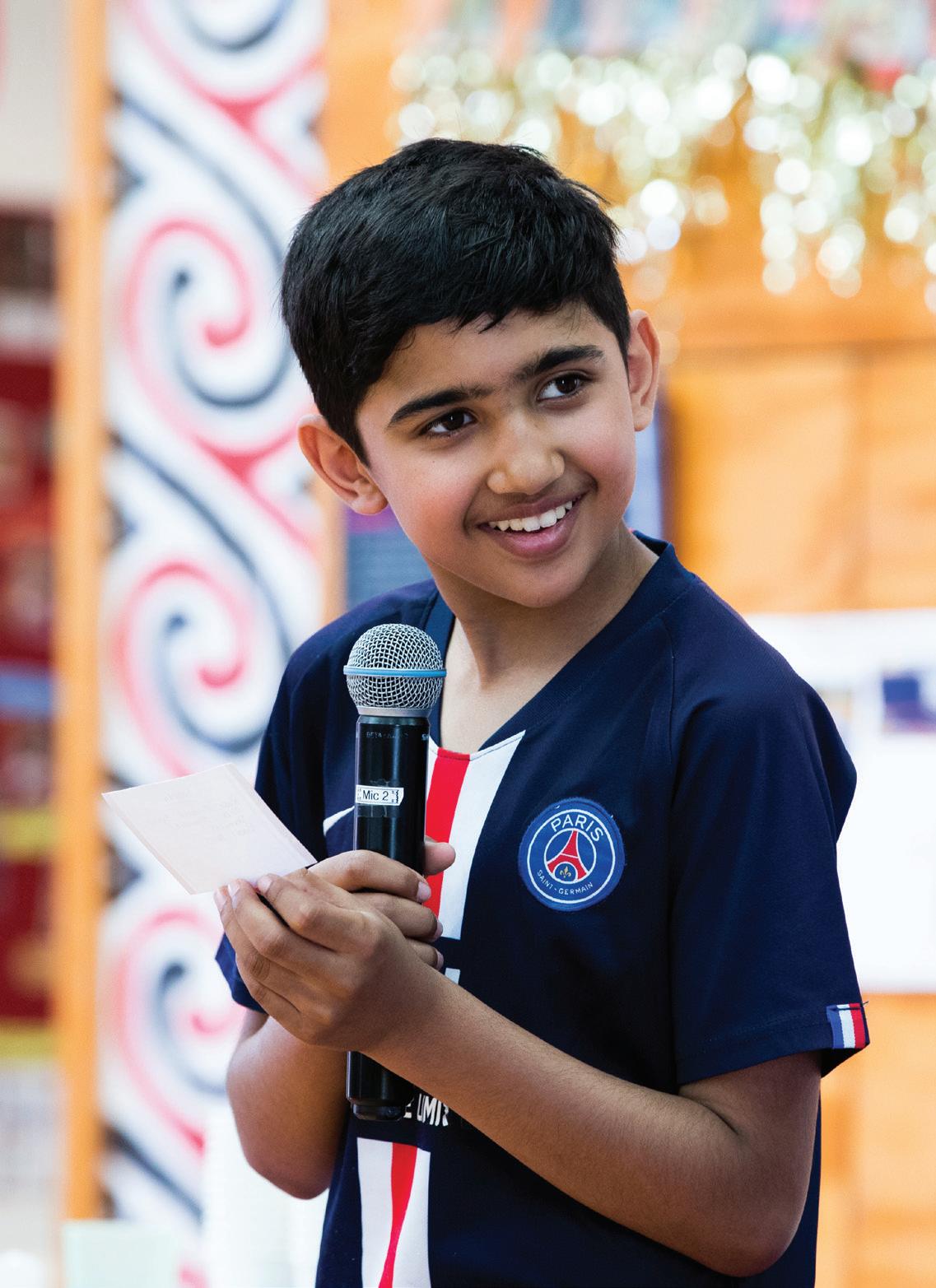


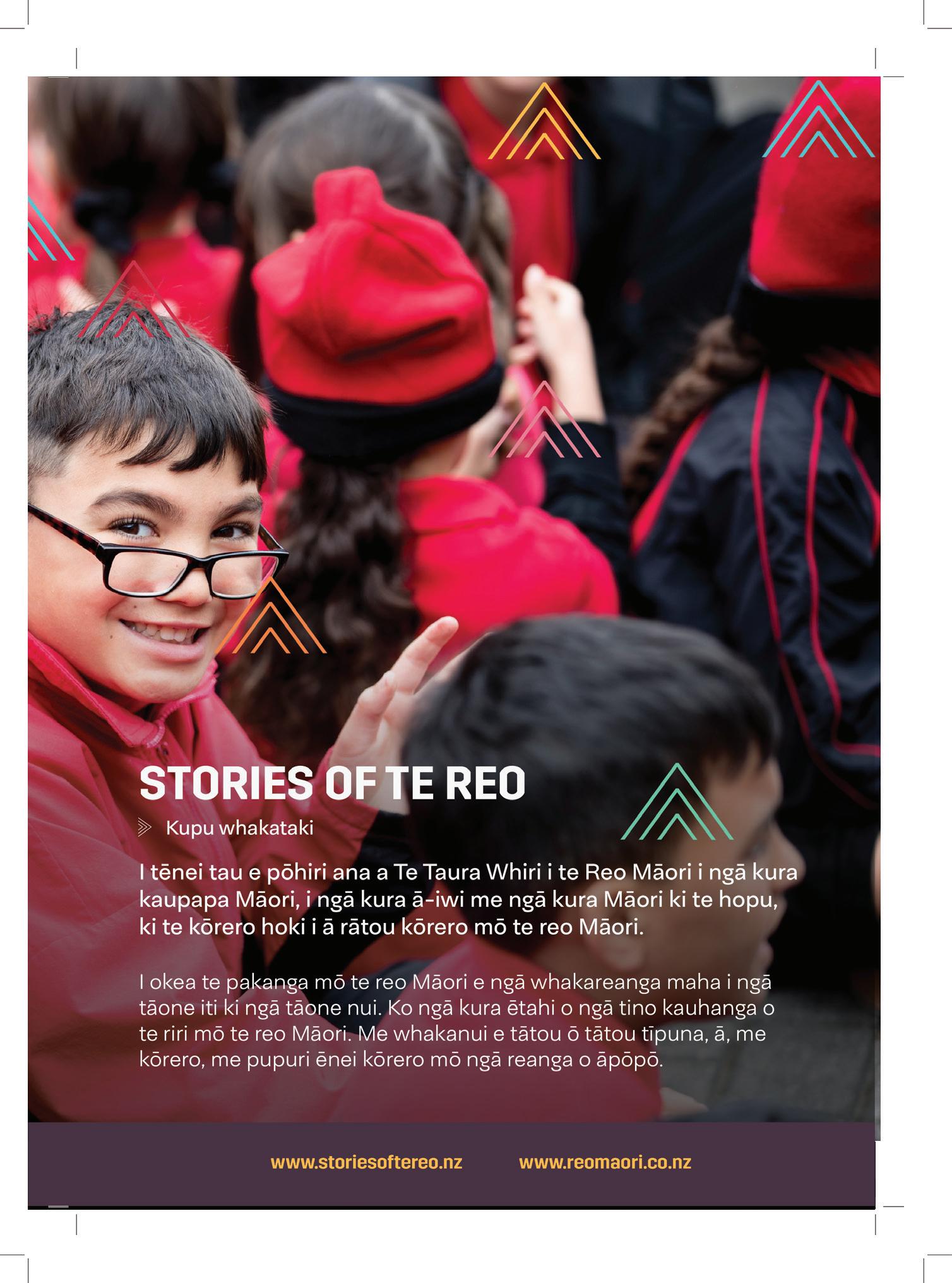
The online services that provide support for survivors and people who may experience abuse have been given a refresh with new tools to help those struggling with family violence.
In 2018 a joint venture was formed to improve the whole-of-government approach to family and sexual violence. In 2022, this became Te Puna Aonui, an Interdepartmental Executive Board that comprises a collective of 10 government agencies.
The work of the collective is guided by Te Aorerekura, the national strategy and action plan that provides a collective path for government, tangata whenua, specialist sectors, and communities to eliminate family violence and sexual violence.
One of the problems facing victims is access to help. While there is help available, not everyone knows how to access it or is able to access it. To help combat this, an expansion of digital services has been developed.
Edwina James, manager for the Ministry of Social Development’s Safe, Strong Families and Communities, has been responsible for steering the expansion of digital services.
“Since I’ve been here, there has been a gap that we’ve seen in the service portfolio. However, it wasn’t until Covid lockdowns that we were able to secure the opportunity to expand services digitally, once people realised that we had lots of people who were isolating at home unable to access face-to-face services.”
This realisation provided the green light to start developing initiatives that would help close the gaps.
One of the developments is re-designing the Are You OK website which now provides 24/7 telephone and webchat help for victims/survivors of family violence and those supporting them to be safe.
“The old site had become a catchall website full of all sorts of information, some of it useful, some of it not so
useful. It was trying to serve everybody, but by trying to serve everybody at the same time, it wasn’t serving any one audience particularly well.”
The primary focus is providing information and pathways to support for adults in intimate partner relationships.
As such there is currently no content on the site specifically aimed at children or young people who are experiencing or impacted by family violence. However, all the information is written in plain English, so any young person accessing the site would still be able to understand and take away key messages.
“We don’t have content directed towards children, but there’s content that children or young people can interact with on these sites.”
Edwina comments that they recently sought feedback on other priority audiences for areyouok.org.nz including young people. They will now be using the results of this research to improve the effectiveness of the site in helping young people access the information and support they need.
As well as the addition of the 24/7 helplines, two new tools have been added to the site. The first of these is Check It Out – a series of questions for people who are concerned about their relationship. The second is the Service Finder tool that helps navigate people to the most appropriate service for them, based on their location and needs. Check It Out is a tool that could be useful for teenagers in a relationship.
“We don’t have content directed towards children, but there’s content that children or young people can interact with on these sites.”
Edwina James
“We know that family violence within youth relationships can be a big problem. So, there is this tool which is kind of like a relationship quiz. People get asked a range of questions about what they’re experiencing. Then the site tells you what you may be experiencing and the types of steps that you can take.”
A new site that has been created is In Your Hands for people who use violence. The site was created as it was observed one of the other significant groups visiting Are You OK were people using violence or people at risk of using violence.
“Online there was a dearth of information for this audience. There was a lack of information for people that think they are being abusive, but seeking help,” says Edwina.
While both sites are targeted towards these two audiences, there’s also information for those who are supporting people who could be experiencing violence or using violence.
All schools are required to have a child protection policy which sets out processes for kaiako to identify and report any form of abuse or neglect such as a disclosure by a student relating to family violence. However, Edwina says the sites can still be valuable tools for teachers because they are key people interacting with families and whānau.
“They could have a sense that something is going on,
so I would say these sites are fantastic for them. One of the best features is the ‘Service Finder’ tool, which you can use if you suspect something could be going on and you’re wanting to reach out to a service provider.
“However, where there is a disclosure of abuse by a child or young person or concern about their wellbeing, any action should be discussed with the school principal or whoever is responsible at the school for the child protection policy.
“The tool is interactive, it walks you through the types of support you may need, for example if you need support services for children in a particular region for mental health as well as violence. It will then identify a range of service providers and will tell you what to expect if you were to call those service providers.”
Edwina also recommends that teachers share information about the sites. This can be done by making posters or including the information in newsletters. She feels that one of the important things to inform students and families about is the confidential chat service.
“I think one of the best ways would just be to explain that if anything was happening or if they did want to speak to somebody, we’ve got staff trained to support people of all ages, and they can just chat anonymously.
“Especially if some of the content isn’t specifically designed for children or young people, this could be a way for them to interact with people that would be able to speak to them about their circumstances.”
Family violence affects many people in our communities. It may include physical or psychological abuse. If you are feeling unsafe, help is available. Call Police on 111 or visit areyouok.org.nz.
Family violence can include physical or psychological abuse. If you are worried about someone you know, call Police on 111 or find out how to help at areyouok.org.nz/ supporting-someone/how-to-support-someone.
Service Finder: areyouok.org.nz/supportavailable/family-violenceservices.
In Your Hands: inyourhands.org.nz.
Harmful sexual behaviours like harassment, assaults and abuse affect many people. If you are concerned about someone’s safety, contact Safe to Talk for confidential support and information about how to help on 0800 044 334, text 4334 or visit safetotalk.nz.
“We know that family violence within youth relationships can be a big problem. So, there is this tool which is kind of like a relationship quiz… Then the site tells you what you may be experiencing and the types of steps that you can take.”
Edwina JamesAccord Teacher-Only Days are for schools and kura to prepare for the changes to NCEA in the way that best suits them.

Schools and kura can choose which day they will hold the Teacher-Only Day allocated for Term 4, from within the Teacher-Only Day window:
If you need support to connect with other schools and kura in your region, please contact the NCEA Lead at your regional office.
For the latest information, visit ncea.education.govt.nz/teacher-only-days or check the School Bulletin.
Ko ngā Rā mō ngā Kaiako Anahe mō ngā kura e whakarite ana mō ngā panonitanga o NCEA ki tā rātou e pai nei. Mā te kura e kōwhiri āhea e tū ai te Rā mō ngā Kaiako Anahe mō te Wāhanga 4, hei waenga i ēnei rangi:
Rā mō ngā Kaiako Anahe 21 Noema – 2 Tihema
Mehemea e hiahia tautoko ana koe ki te tūhono ki ētahi atu kura i tō rohe, tēnā, whakapā atu ki te Kaiārahi NCEA ki tō tari ā-rohe.
Mō ngā mōhiohio hou, toro atu ki ncea.education.govt.nz/teacher-only-days tirohia rānei He Pitopito Kōrero.


Former principals Erika Ross and Steve Lindsey visited 60 schools across Aotearoa, talking to school leaders about their experiences of leading their communities through a pandemic.

After talking to a couple of students in the playground, as Newlands Intermediate principal Angela Lowe walked away, to her dismay she overheard one student say to the other, “Who’s that again?”
“I wasn’t a face in my own school any more,” Angela recalls. Periods of lockdown and no assemblies when school reopened meant she wasn’t well known to some of her students. This prompted the start of ‘Invite Me In’ sessions where classrooms invited Angela in to share what they were doing.
This was one of many poignant and honest reflections shared by the principals interviewed for the series. In Angela’s case, the challenges were remaining visible, ensuring her staff’s wellbeing, and keeping connected with whānau. Other principals shared challenges around getting devices to their families, keeping students engaged in learning, and effective communication. Others spoke of the importance of collegial support and reflective practice as leaders. And like Angela, many sought opportunities to try something new.
Steve and Erika noted that many common themes emerged around principals’ experiences and learnings.
One of these themes was that principals found themselves thrust into the critical role as leader of their community.
Erika says this was reflected in her discussion with the New Zealand Principals’ Federation (NZPF) Executive.
“More than any other organisation or agency, it was schools that families and communities turned to for clarity and information they could trust and understand. The community’s reliance on schools placed a huge responsibility on school leaders and the peak bodies that supported them.”
A number of principals talked about the challenges of engaging with very diverse communities where language was a potential barrier to understanding.
The importance of wellbeing came through as a strong theme in many of Erika’s and Steve’s interviews.
“I was blown away by how creative people are about looking after their people now that they’ve come back. There’s a sense of loss – they feel anxious or aggrieved that they’ve missed out,” says Steve. He recalls one principal talking about how his school introduced an activity because it got a young person back to school – and essentially back into learning and life.
Erika says the NZPF identified the relentless effects of the pandemic and the importance of nurturing the wellbeing of students, staff and leaders. “They acknowledged they had learned a lot from their Auckland and Australian colleagues and that sharing the experiences of their Christchurch colleagues after the earthquakes was also helpful and should be shared with all principals.”
“There were mixed feeling towards online learning,” reflects Erika. “For schools that had a lot of training and development in this area it was a natural flow. For others it was less so and there were issues of engagement of kids.”
Throughout the challenges of the pandemic, principal of Kerikeri High School Elizabeth Forgie has been a champion for “what we can do” rather than “what we can’t do”.
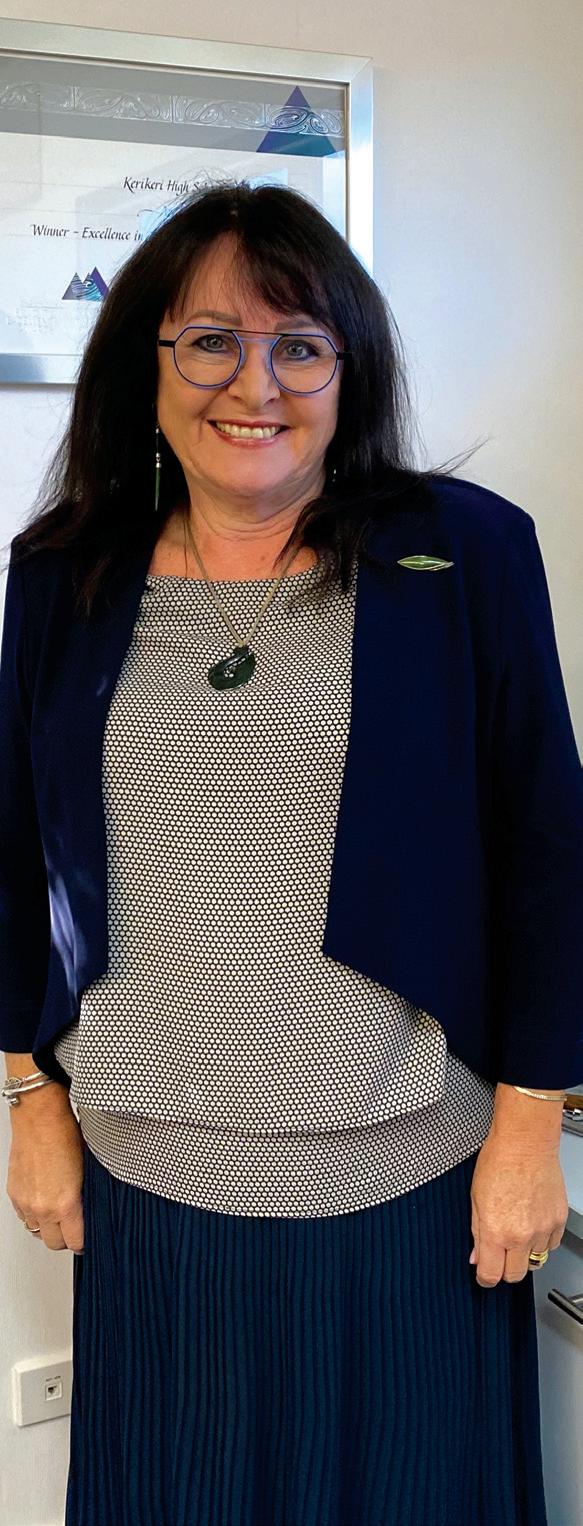
Steve agrees. “Clearly those schools that had already embarked on the digital learning space before lockdowns moved into this space a lot more seamlessly than others. Most secondary principals agreed it was useful for some students, but not everyone.”
Erika adds to this: “Hybrid learning works for kids who are self-directed learners anyway, who have appropriate conditions at home in which they can work, who have access to that digital framework, uninterrupted and not sharing it with others. It doesn’t work for the others necessarily. And nor does it work for all teachers. There are some teachers who aren’t very good in this environment who are fabulous in the classroom.”
Erika says the NZPF identified inequitable access to digital connectivity and to devices as a barrier for many schools, particularly in rural areas, but also in some low socioeconomic areas as well.

Steve says many secondary principals are keen to build on the flexibility that many of their students have benefited from with their learning. “I had a principal say to me that they had some senior secondary students say, ‘Online learning has worked really well for me, I’ve got this research to do, can I complete at home and then check in?’ and they sat there and thought, ‘Why not?’
“Whether that translates to a long-term practice will be interesting,” he reflects. “I think there are other factors that play in our system which need to be supportive of those sorts of flexible practices. And they could include things like collectives and legislation that sits around whether a student has to be onsite or not.”
Nearly every principal mentioned the importance of clear communication during the pandemic, and there were many good examples shared of what this looked like in different school communities.

Erika says the NZPF Executive valued the practical support and guidance that principals received from their regional Ministry directors. They also valued the opportunity to discuss upcoming announcements with the Minister of Education and the Secretary for Education.
“This enabled the peak body leaders to use their own communication channels to keep their members accurately informed about, for example, the arrival and allocation of ventilators or changes to Covid levels. This approach was useful and reduced the inconsistency and inaccuracy of messages coming from multiple sources, including the media,” she says.
schools talked about overhauling their systems that weren’t fit for purpose, especially during lockdown or hybrid situations,” says Steve.
Many secondary schools looked at structuring timetables differently to meet students’ needs and preferred ways of learning. Others have changed their reporting and parent interview processes. Many have reconsidered their approach to meetings.
Some principals found opportunities to do things differently for ākonga with learning support needs. For example, Waitaha School in Christchurch
with
“A lot ofexperimented
“We should be taking the positive and most beneficial things that have happened out of the pandemic in terms of the relationship between the principals and the Ministry and keep doing those. And build on those strengths.”Steve Lindsey Shirley Boys’ High School principal Tim Grocott talks to Erika and Steve about creating simplicity amidst the demands and pressures to create space for teachers to get on with their jobs. Principal Kaylene Macnee joined Discovery School in Whitby mid-way through the pandemic, which presented a range of challenges and opportunities. She talks on video about this experience.
online assemblies and even discos, which were a hit with their students.
Erika says they drew some interesting observations from the schools they visited in Christchurch, given their experience of leading through disruption, trauma and change.
“There had been a lot of learning across those principals through the Christchurch earthquakes, both in terms of how they led their communities through it and how they ran their schools – and it all just disappeared; it had never been captured or shared across the country. They felt that had that been the case, they could have shared some of the learning with other principals,” she says.
Steve is hopeful that this work goes some way to capture some of the experiences and learning based on the leading through the pandemic years.
Erika says many of the principals she met with realised that distributed leadership was incredibly important. Many embraced a strong reflective practice during this time as well. “How is what I am doing impacting on my staff, on my community? What do I need to change or do differently?”
“Others realised that if they don’t have a healthy leader you don’t have a healthy school, so that they had to think about what they were modelling in terms of looking after their own wellbeing.”
Steve says many realised that involving their staff and students in decision making was important to getting buyin across their school communities.
Many principals spoke of the support and collaboration they experienced from their peers and local principal
networks, valuing the chance to collectively make sense of the messaging, and in many cases ensure a consistent approach across their community.
A key learning for Steve and Erika was the importance of having a strong foundation to operate from in challenging times.
“You have to have the social capital built in your relationships before something like this happens. You will not be as successful in leading your community if you haven’t got that social capital, so you’ve got to put time and energy into building that all the time,” says Erika.
They also agree that we need to reconnect with the purpose of what we’re trying to do in education, most importantly at a system level.
“Purpose needs to come to the surface a little bit more,” says Steve. “They are all good things that we’re trying to do, but they need to be aligned and have a clear purpose so that a school that has had a bit of a wobble and going through the turbulence of pandemic can reset and realign and have a plan going forward,” he says.
Both Erika and Steve found that principals are exhausted and they believe we need to be thinking about how to make school leadership more sustainable for the long term.
“We talk about long Covid, but I think we need to talk about long Covid for organisations,” says Steve. A lot of principals talked about needing to get out of being in constant survival mode, he says.
“We should be taking the positive and most beneficial things that have happened out of the pandemic in terms of the relationship between the principals and the Ministry and keep doing those. And build on those strengths. Because they worked and brought people closer together.”
Sometimes it's better to hear the story from the source. Go on a journey into Steve Lindsey and Erika Ross' experience of visiting 60 schools across Aotearoa to lead their communities through Covid-19.
They share common themes, key learnings, and opportunities for growth and innovation.
Visit educationgazette.podbean.com.
Read and listen to all the interviews at Te Mahau online
Situated in West Auckland, West Harbour School is an attractive, wellresourced school with fantastic students, staff, BOT and a supportive community.

A motivated and inspiring Principal is required to lead our diverse and culturally rich school. We are seeking to employ an innovative professional with proven management and leadership experience, sound curriculum knowledge and the ability to foster positive relationships within our school and the wider community. Our new Principal will be a strong, confident and passionate educator, with proven leadership experience, who leads by example and inspires others. The appointee will have strong pedagogical, relationship, strategic and organisational leadership skills, an ability to inspire excellence in curriculum delivery and learning outcomes and an affinity with our school’s divergent cultural groups.
The successful applicant will also:
• Lead with a child-first, child-centred ideology
• Be an excellent communicator, with superior relationshipbuilding skills that foster a strong team spirit
• Work collaboratively and proactively with staff, Board of Trustees and the wider school community to further develop our school
• Have proven ability in raising achievement levels and promoting learning success for all students
• Set a strong strategic direction for our school and have the ability to successfully implement change when required
• Ensure top quality teaching and learning programmes are delivered to create an environment in which all students experience success
• Be visible and engaged in the classrooms, the school and our community
• Have a passion for their own and others’ professional development and the ability to attract, inspire and retain outstanding teachers
• Set high standards and expectations that are aligned to our school’s values – Tolerant, Respectful, Responsible, Caring and nurturing and to always Strive for Excellence

